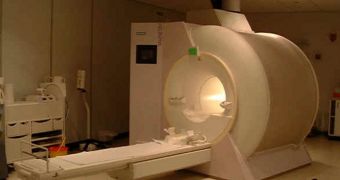A group of scientists from the Washington University School of Medicine in St. Louis (WUSM) says that it is possible to detect tell-tale signs of Alzheimer's in predisposed, high-risk patients, and adds that this could help doctors treat the condition earlier on than currently possible.
Experts are familiar at this point with a great variety of risk factors that underlie the development of this form of dementia, but unfortunately a clear diagnostics cannot be placed on an individual until amyloid plaques do not develop in their brains.
Usually, once these structures are discovered forming in neurons, the patient is already in the grip of the condition, which means that subsequent development of Alzheimer's is only a matter of time.
But what if you could discover this form of dementia long before it begins its stage of accelerated development? This is the question that drove the WUSL team in this new research.
It could be that the brain functions of people who will eventually go on to develop the condition are impaired long before the amyloid plaques develop. Researchers say that they were able to identify a genetic variant that plays an important role in this.
According to the group, a particular form of the apolipoprotein E (APOE) gene called APOE4 may be responsible for this effect. They say that people sporting this genetic variant are at higher risk of developing dementia later in life.
The group reported its discovery in the December 15 issue of the esteemed Journal of Neuroscience.
“We looked at a group of structures in the brain that make up what’s called the default mode network,” explains WUSL expert Yvette I. Sheline, MD, who was the lead author of the new study.
“In particular, we are interested in a part of the brain called the precuneus, which may be important in Alzheimer’s disease and in pre-Alzheimer’s because it is one of the first regions to develop amyloid deposits,” the scientist goes on to say.
“Another factor is that when you look at all of the structural and functional connections in the brain, the most connected structure is the precuneus. It links many other key brain structures together,” she adds.
The new experiments were carried out on some 100 people,average age 62, who were subjected to brain scans conducted via magnetic resonance imaging (MRI). The APOE4 variant stood out as a large risk factor for developing this form of dementia.
“The current belief is that from the time excess amyloid begins to collect in the brain, it takes about 10 years for a person to develop dementia,” Sheline explains.
“But this new study would suggest we might be able to intervene even before amyloid plaques begin to form. That could give us an even longer time window to intervene once an effective treatment can be developed,” she argues.
The expert holds an appointment as a professor of psychiatry, radiology and neurology at WUSM, where she is also the director of WUSM Center for Depression, Stress and Neuroimaging.

 14 DAY TRIAL //
14 DAY TRIAL //